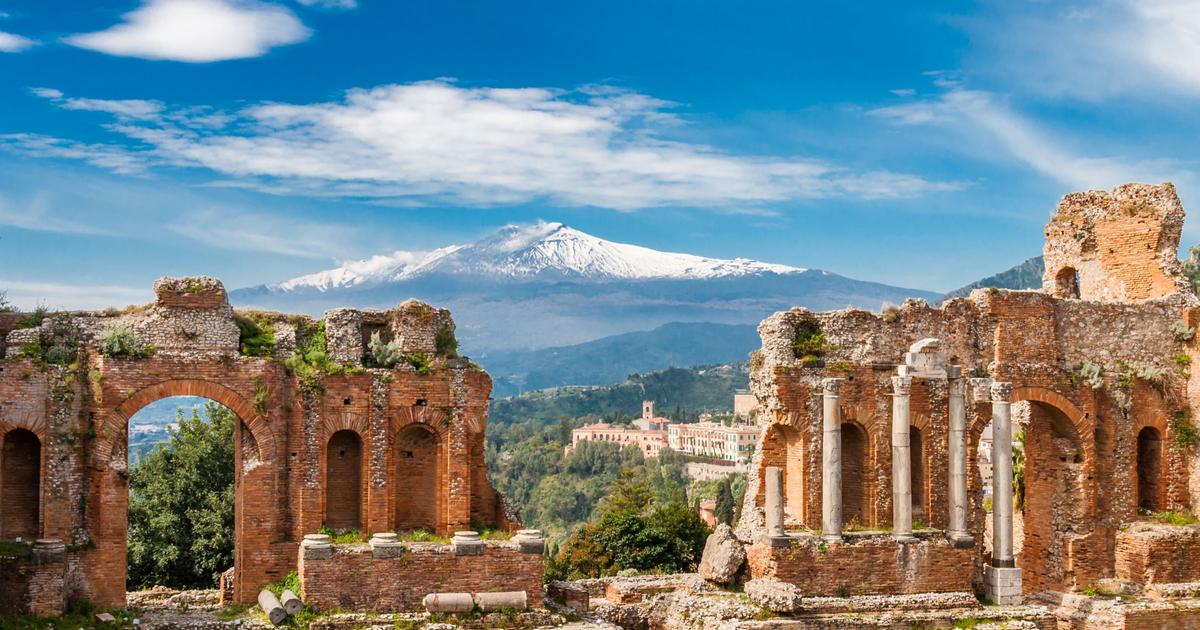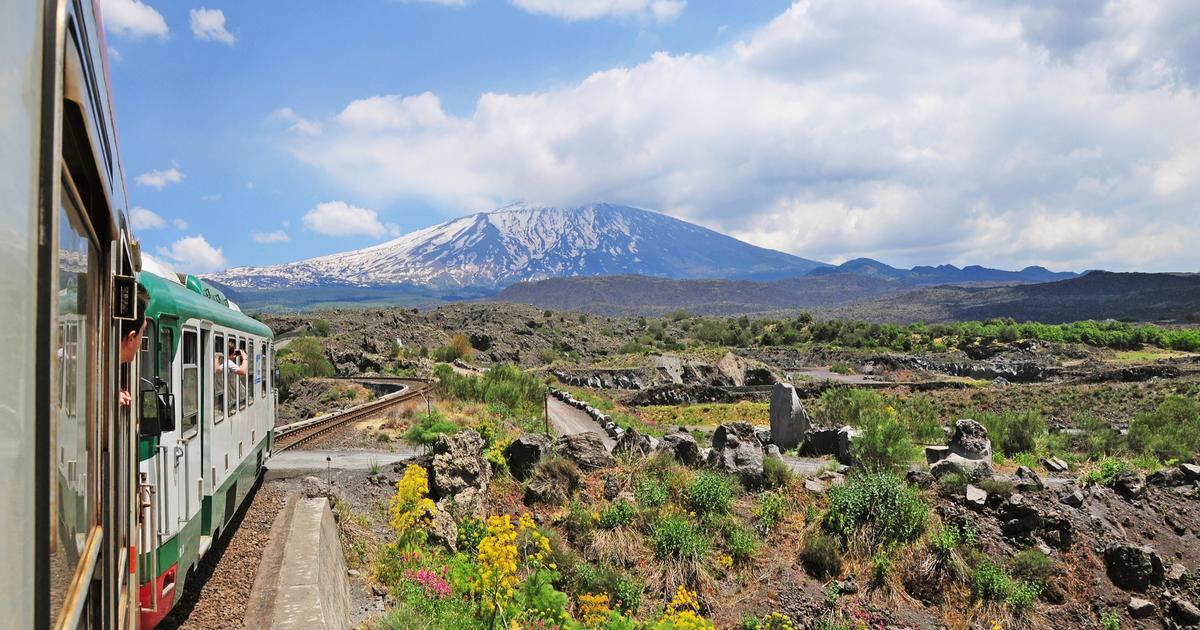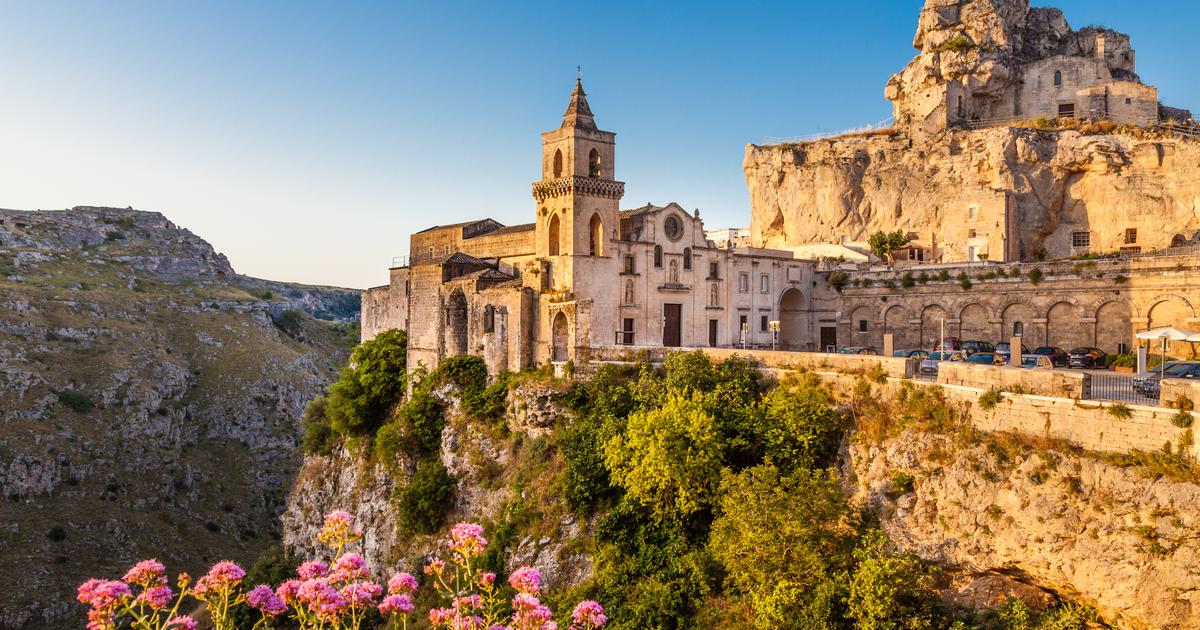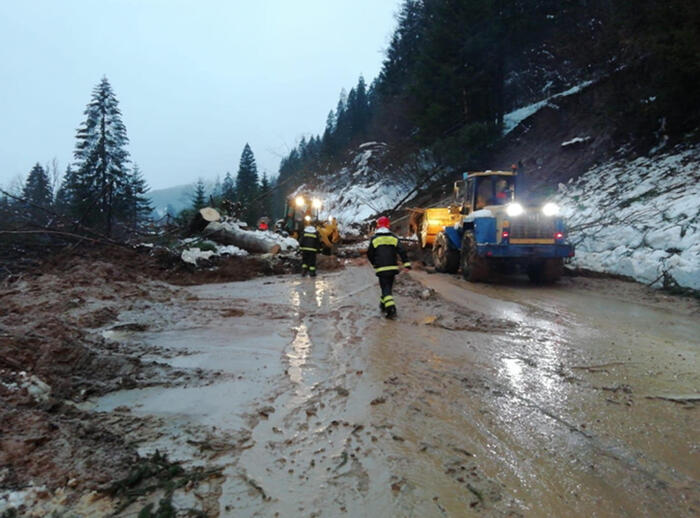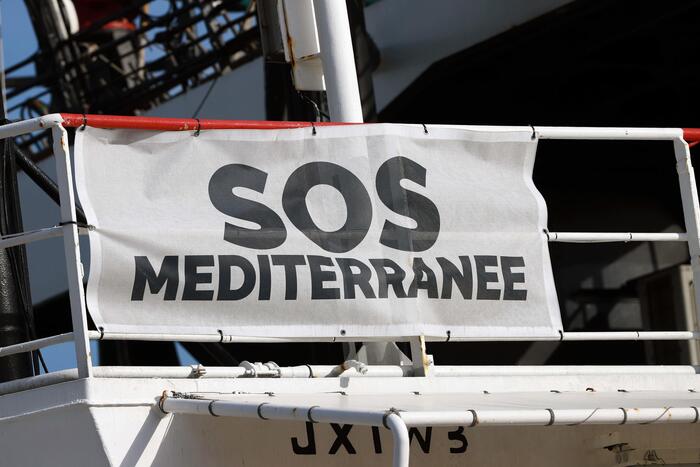At the crossroads of Mediterranean civilizations, Sicily – the largest island in the Basin – has made the age-old intermingling of cultures its identity.
Colonized in the 7th century BC.
BC by the Phoenicians, the island passes into the hands of the Carthaginians, the Greeks, the Romans, the Byzantines, the Arabs and the Normans, before being occupied by the Aragonese, the Austrians and the Bourbons.
The result is a heterogeneous heritage, often listed on Unesco, between Greek temples, Roman villas, Arab-Norman churches and palaces, Hispanic Baroque towns and monuments...
To discover
Partner stay in Italy |
8 days |
Self drive tour of Sicily
Trips to Italy: tailor-made tours, hotels and stays from our partners
A wonderful cultural and artistic mix, celebrated even in the cuisine, largely inspired by the Orient.
This charming land of distant Italy also gives itself up without counting to lovers of idleness or quite simply of dolce vita.
Andiamo everything!
Palermo, vibrant Sicilian capital
The emblematic Quattro Canti crossroads in Palermo.
Massimo Italiano / Comune di Palermo
As soon as you disembark from the plane, throw yourself headlong into the historic and beating heart of Palermo – a city steeped in contrasts – to passionately embrace its endearing atmosphere, both full of splendor and decadence.
Set down your suitcases at the Palazzo Natoli Boutique Hotel (from €124 per night), a beautiful charming address housed in an 18th century palace, to explore on foot the streets of the old center, lined with magnificent palaces and monuments, preserved in a "juice" often decrepit, but also sometimes restored.
The emblematic
Quattro Canti crossroads,
the navel of the Baroque city, is surrounded by buildings with concave facades, adorned with allegorical fountains evoking the seasons, the ancient waterways of the city, the great Spanish kings, the patron saints of the four neighborhoods that meet here.
A few meters away,
Piazza Pretoria
is famous for its monumental 16th-century white marble fountain, embellished with nude statues of nymphs, mermaids, satyrs and humans.
Nicknamed in its time "fountain of shame" because of the too explicit nudity, it also embodied the corrupt municipality in the 18th-19th centuries... And don't miss the splendours of the unmissable
Palazzo Gangi
(guided tour by reservation; tel.: 0916162718, palazzogangi@hotmail.com)
,
authentic aristocratic family palace from the 18th century, preserved in its original state and made legendary by a few scenes from the film
The Cheetah,
shot here by Visconti in 1963 , with Alain Delon, Burt Lancaster and Claudia Cardinale.
Read alsoSicily, cinema paradise
Still in excess, descend into the Catacombe dei Cappuccini, a strange underground cemetery in operation since the 16th century, where nearly 8,000 embalmed corpses are displayed standing, in their best clothes!
Then join the world of (good) living at the
Mercato del Capo
, a colorful market, looking like an Arab souk, teeming with slices of popular life.
The opportunity to taste the typical
pane câ mèusa,
offal sandwich of medieval origin.
The golden Byzantine mosaics of the Cappella Palatina
.
Massimo Italiano / Comune di Palermo
To linger a little longer in Palermo, the Palazzo Reale, erected by the Norman kings on the old Arab fortification of the 9th century, now houses the Sicilian parliament.
His visit reaches ecstatic heights in the sublime 12th-century
Cappella Palatina
, coated in gilded Byzantine mosaics, at the height of Arab-Norman art.
A monument listed as a UNESCO World Heritage Site with eight other palaces and churches dating from the Norman kingdom of Sicily, mostly located in Palermo.
Among these, the cupola of
the church of Santa Maria dell' Ammiraglio
conceals other Byzantine mosaics, among the oldest and most beautiful on the island.
Similarly, the astonishing cathedral, built on the old mosque, shows a harmonious blend of styles that takes us back to the 19th century.
And why not end this discovery of Palermo with a puppet show
,
a popular island tradition inspired by the chivalric literature of the Middle Ages, Italian poetry of the Renaissance, the lives of saints or famous bandits.
Born in the 19th century, the famous “
Opera dei pupi
” is now listed as a UNESCO Intangible Heritage Site.
Read alsoLive (and sleep) like a prince in Palermo
Live the Aegadian Islands
The tiny port of Levanzo, overlooked by white houses with blue shutters.
Adobe Stock
At the western end of Sicily, let's embark in
Trapani
on one of the
aliscafi,
these curious hydrofoil boats straight out of a
1960s
James Bond !
Head for the Egadi Islands, an archipelago of three islands scattered in the largest marine protected area in Europe.
Favignana
is the largest of the islands, but also the closest and the most touristic;
to discover by bike passing by its old Tonnara, a 19th century tuna fishery transformed into a museum.
A stone's throw away,
Levanzo,
the smallest, opens onto a tiny picture-postcard port, overlooked by white houses with blue shutters.
But our preference goes to
Marettimo
, the furthest away, for its timeless, authentic atmosphere conducive to idleness.
There are no hotels or a large choice of accommodation here, but let's settle down at Marettimo Residence, offering functional apartments in a lush garden by the sea. Discover this mountainous island with wonderful wild landscapes, already known to the Romans who seized it after the first Punic War, won over Carthage in 241 BC.
J.-C.
The amazing sea caves of Marettimo.
Morenovel - stock.adobe.com
Starting from the charming village of white houses – leaning against the mountain and flanked by a small artisanal fishing port – a few paths crisscross Marettimo to climb
Monte Falcone,
the highest point of the island at 686 m, or reach this picturesque
Spanish castle .
perched
in the 17th century, but also some secret coves with crystal clear waters… Also curious
sea caves
to explore by boat with a guide and the possibility of blowing bubbles of wonder while practicing scuba diving.
More info:
Tourist Office of the Aegadian Islands
The formidable Greek temples of Agrigento
In 1997, the archaeological area of Agrigento, Sicily, was included in the UNESCO World Heritage List.
Adobe Stock
It is in the evening that we like to discover the Valley of the Temples of Agrigento, when the stone of its prestigious ancient sanctuaries blazes under the spotlights.
But first, go to the Villa Athena hotel, a former 18th century princely residence set in greenery, facing the temples.
Colony founded by the Greeks in the 6th century BC.
AD,
Agrigento
becomes one of the main cities of the Mediterranean world, adorning itself with a dozen Doric temples aligned on an overhanging ridge.
Listed as a UNESCO World Heritage Site, this ancient site is one of the most extraordinary to have come down to us.
The highlight is the elegant
Temple de la Concorde
– of perfect proportions – which has remained incredibly intact as it served as a church thereafter.
And don't miss the
Archaeological Museum
, which houses the glorious objects from the excavations
in situ
.
More info:
livingagrigento.it
Climb Mount Etna, a capricious volcano
The ascent of Etna is generally undertaken from the south from Sapienza
,
the most popular route, because the most comfortable.
Gruppo Guide Etna North
Its fascinating silhouette, foggy, smoking and snow-covered in winter, can be seen from afar.
Europe's largest volcano, culminating at 3,350 meters, is also one of the most active in the world and its spectacular eruptions are frequent.
It dominates a vast protected area, the
Parco dell' Etna
(parcoetna.it), and stands out as Sicily's main tourist attraction.
Its ascent is generally undertaken by the South from
Sapienza,
the most popular route, because the most comfortable.
There, a funicular carries hikers under the summit of the volcano, the final approach being made by 4x4 truck, then on foot and necessarily with a guide.
We rather prefer the ascent of the giant by its northern flank, from
Piano Provenzana,
less easy of course, but wild at will and not very touristy.
Then take your base camp at the Shalaï Resort hotel in
Linguaglossa
, a quiet village renowned for its charcuterie and its fertile vineyards classified DOC Etna, in an authentic setting.
From there, the vulcanologist guides of the
Gruppo Guide Etna Nord
lead you to the summit of the volcano, passing through various craters and in a picturesque lunar atmosphere, made up of lava flows gradually taken over by vegetation.
And on this side of Mount Etna – snow-covered in winter – several slopes offer skiing with a view of the sea, a real luxury.
Read alsoEtna, king of Sicily
Catania rises from the ashes
The astonishing Elephant Fountain in Piazza del Duomo – the beating heart of the city of Catania.
Adobe Stock
Founded in the 8th century BC.
J.–C.
and repeatedly abused by earthquakes and lava flows from Etna, the economic capital of Sicily has always recovered.
Classified as a UNESCO World Heritage Site with the late Baroque towns of the Noto Valley – all rebuilt after the terrible earthquake of 1693 – Catania reveals the picturesque charm of its blackened alleys, lined with churches and palaces.
Take up residence at the Liberty Hotel (from €108 per night), accommodation with very classic charm in an Art Nouveau villa;
before joining on foot the elegant
Via Etnea
, the city's backbone, which descends from the volcano to the astonishing
Elephant Fountain
, one of the oldest monuments and also the symbol of Catania.
Crowned with a granite obelisk, this iconic basalt elephant dominates the
piazza del Duomo
– the beating heart of the city – flanked by the superb Baroque facade of the
Duomo
(cattedralecatania.it), designed by the Sicilian architect Giovanni Battista Vaccarini.
Palazzo Biscari.
Fotokon - stock.adobe.com
And at the corner of the square, stands the centuries-old and authentic
fish market
, a unique experience!
A few more steps and the 18th-century
Palazzo Biscari
(palazzobiscari.it) opens onto sublime original interiors, celebrated by the earthy anecdotes of the owner – Prince Biscari himself – who leads the guided tour in French with a beautiful grain of madness!
One of the rooms was thus transformed into a tennis court by General Montgomery, who occupied the palace after the Allied landings of 1943. Moreover, the fascinating Museum of the Landings in Sicily commemorates this turning point in the Second World War.
More info:
Catania Tourist Office
The sublime Baroque towns of the center
The eight towns in southeastern Sicily - Caltagirone, Militello Val di Catania, Catania, Modica, Noto, Palazzolo, Ragusa and Scicli - were all rebuilt after 1693, on the site or next to the towns that stood there before the earthquake of that same year.
Adobe Stock
Rebuilt like Catania, these baroque cities of the
Noto Valley
each reveal a strong character, for as many atmospheres at the antipodes and a unique deluge of Baroque monuments!
To explore the energetic
Ragusa,
pass by its Scalinata, a winding staircase connecting the two districts of the city in a flight of palaces, churches and superb panoramas.
And let's put down our suitcases here, at the ad 1768 Boutique Hotel (from €110 per night), an 18th century palace camped between vintage and design, to then shine in the region.
Dozing in its tantalizing scents of chocolate, beautiful
Modica
barely vibrates to the sound of the bells of its
San Giorgio duomo
, a masterpiece of the Baroque.
Beneath the remains of an old Norman castle,
Scicli
is explored along its
via Francesco Mormino Penna
, lined with palaces and churches.
Noto,
organized around three parallel streets, is a grandiose and very touristy city-museum, magnified by its nocturnal lighting.
Read alsoNoto, the baroque Sicilian city rebuilt on the rubble of the 1693 earthquake
Emerging from the countryside and off the beaten track, the charming little town of
Palazzolo Acreide
hesitates between superb and decrepitude.
Grip the steps of its emblematic
scalinata
to discover peaceful
Caltagirone,
renowned for its centuries-old ceramic workshops.
And in the surroundings, do not miss the sublime mosaics of the
Roman villa of Casale
in
piazza Amerina
, in particular the famous
Ragazze in Bikini
(young girls in bikini), really amazing!
Syracuse, the charm of Ortygia
The island of Ortigia, historic center of Syracuse.
Adobe Stock
Unmissable, the old Syracuse spreads its maze of alleys on
Ortygia
, a pointed island which splits, like a bow, the Mediterranean azure.
To flirt with the legend, let's stay at the Ortea Palace Hotel (from €339 per night), housed in the former Art Nouveau post office building.
Founded in 734 BC.
J.-C., the birthplace of Archimedes exhibits a formidable variegated heritage, which testifies to an immense influence and a rich history with multiple influences.
Superb ancient remains, including the spectacular
Duomo,
which stands within the walls of an ancient Greek temple, with columns still visible.
This emblematic
piazza del Duomo
is also home to the small
Baroque church of Santa Lucia alla Badia, which houses
Caravaggio
's famous canvas
,
The Burial of Saint Lucia
, painted during his exile in Sicily.
Surrounded by papyrus, the
Arethusa fountain
– a source of fresh water by the sea – conveys astonishing ancient legends and remains one of the symbols of the city.
While at the southern tip of Ortygia stands the
Maniace castle, a 13th century military structure, surrounded by the sea
. century ;
and the
Paolo Orsi Archaeological Museum
(regione.sicilia.it/museopaoloorsi), for its profusion of world-famous works.
More info:
Syracuse Tourist Office
Read alsoIn the footsteps of Dionysius the Elder, the paranoid tyrant of Syracuse
Taormina, the Sicilian Saint-Trop'
The medieval village of Taormina, perched on a rock above the sea. Adobe Stock
Every year in July, this charming medieval village, perched on a rock above the sea, lives to the rhythm of the
Taormina Film Fest
(taorminafilmfest.it), bringing together the elite of international cinema.
An event that perpetuates the romantic – even trendy – image initiated in the 19th century by travellers, artists, big industrialists and monarchs, who assiduously frequented the premises.
The Hotel Villa Belvédère (from €196 per night), a former mansion in the heart of a superb garden, is the perfect stopover for exploring the pedestrian streets of Taormina.
At the bend of
Corso Umberto I°,
the main axis lined with squares, palaces and churches, we also discover the remains of the Greco-Roman city, including the beautiful
Ancient Theater
(parconaxostaormina.com), a semi-circle of 110 meters built from the 3rd century BC.
AD and still in operation for summer shows.
Without forgetting splendid views of the sea and the pretty
beach of Isola Bella
, which can be reached by cable car.
More info:
Taormina Tourist Office
The medieval charm of Cefalù
Cefalù, an old fortified medieval fishing village, leaning against a huge steep rock.
Balate Dorin - stock.adobe.com
We fell in love with this former fortified medieval fishing village, leaning against a huge steep rock,
La Rocca
, and bordered by a clear sandy beach with turquoise waters.
The beautiful postcard!
And since here you won't be alone, go outside the old town, to Club Med Cefalù (from €1,199 for 7 nights / adult), which spreads out its little houses in the hollow of a pretty peaceful cove.
Highlight in the exploration of the few streets of Cefalù, its sublime
cathedral-fortress
from the 12th century, among the most beautiful in Sicily, in a very pure Arab-Norman style.
Inside, its main apse is covered with golden Byzantine mosaics, representing a formidable Christ pantocrator.
A monument listed on Unesco, with eight other palaces and churches dating from the Norman kingdom of Sicily… And climb to the top of
the Rocca,
where the remains of a medieval fortified castle stand enthroned;
superb panorama as a bonus!
More info:
Cefalù Tourist Office
Read alsoSicily: the Club returns to Cefalù
Travelogue
GO TO SICILY
By plane
, the airports of
Palermo
(aeroportodipalermo.it) and
Catania
(aeroporto.catania.it) are the main gateways to Sicily, connected to France by numerous regular and low-cost flights.
Car rental on arrival.
By boat
, there is an interesting
Toulon-Trapani
crossing
with the company
Corsica Ferries
(corsica-ferries.it), which also provides a
Nice -Trapani
connection
,
but less frequent.
The port of Trapani is located at the western end of Sicily, facing the Aegadian Islands.
OUR ITINERARY ADVICE
Etna southeast crater in the fall.
Gruppo Guide Etna Nord
It is possible to land in Palermo to leave by Catania and vice versa.
Itinerary n°1: the jewels of Sicily in 14 days
Arrival at Palermo airport, then, 3 days in Palermo;
1 day in Agrigento;
3 days in the baroque cities of the center;
2 days in Syracuse;
2 days in Catania;
1 day on Etna;
1 day in Taormina;
and 1 day in Cefalù;
return via Palermo airport.
Itinerary n°2: heritage and idleness in 12 days
Arrival at Catania airport, then 2 days in Syracuse;
2 days in Catania;
1 day on Etna;
2 days in Cefalù;
2 days in Palermo;
and 3 days in Marettimo (Aegadian Islands);
return via Palermo airport.
PRACTICAL INFORMATION
Italy Tourist Office
Sicily Tourist Office

